
Holi, the vibrant festival of colors, is one of India’s most cherished and lively celebrations, symbolizing the triumph of good over evil and the joyous arrival of spring. This year, Holi will be celebrated on Friday, March 14th, filling the air with laughter, music, and the vivid hues of powdered colors. Rooted in ancient traditions, Holi is a two-day festival that begins with Holika Dahan or Chhoti Holi on the first day, a sacred bonfire ritual symbolizing the destruction of negativity.
The second day, known as Dhuleti, Dhulandi, or Dhulivandan, is when people of all ages immerse themselves in the sheer joy of smearing colors, exchanging festive delicacies, and strengthening bonds with loved ones. Beyond its playful revelry, Holi ushers in the warmth and vitality of spring, bidding farewell to the chilly days of winter. It is a celebration of renewal, unity, and unbridled happiness that transcends boundaries, inviting everyone to partake in its joyous spirit.
Significance & Importance of Holi

Holi, the festival of colors, transcends its outward vibrancy to embody profound cultural, spiritual, and emotional significance. It is not just a celebration but a momentous reminder of life's deeper truths, symbolizing the eternal triumph of good over evil, the renewal of life, and the boundless joy found in unity and love. Holi reflects the human journey—where challenges are overcome, differences dissolve, and renewal becomes possible.
At its spiritual core, Holi is intertwined with ancient mythology, particularly the story of Prahlada, the devoted follower of
Bhagwan Vishnu
, and his victory over his tyrannical father, Hiranyakashipu. The symbolic burning of Holika, who attempted to harm Prahlada, represents the annihilation of negativity, ego, and injustice. The ritual of Holika Dahan serves as a spiritual cleansing—a collective act of letting go of past grievances, hatred, and fears, paving the way for forgiveness and personal growth. It invites participants to burn away the old to make space for positivity, hope, and new beginnings.
As the festival transitions into the second day, the joyous colors of Holi come alive. Each color carries a deeper meaning—red signifies love and energy, green represents renewal and life, yellow embodies happiness and health, while blue reflects tranquility and wisdom. When these colors are smeared on faces and clothes, they transcend superficial boundaries, uniting people of different castes, creeds, and communities. In this moment of playful chaos, Holi dissolves societal hierarchies and reminds every one of their shared humanity. It is a beautiful representation of equality, where joy knows no barriers, and all are bound by the same spirit of celebration.
Holi’s arrival in the season of spring adds another layer of significance. Just as nature rejuvenates, bursting forth with blossoms, warmth, and life, Holi encourages us to awaken from the slumber of winter—both literal and metaphorical. It is a time to rejuvenate the soul, embrace vitality, and align with the rhythms of nature. The festive air, filled with the scents of flowers, the melodies of folk songs, and the vibrant energy of dance and laughter, resonates with the essence of life’s cyclical renewal.
On an emotional level, Holi fosters togetherness and reconciliation. Families, friends, and communities come together, putting aside differences, mending broken bonds, and strengthening their relationships. Sharing traditional sweets like gujiya and thandai during the festival symbolizes the sweetness of unity and the joy of communal harmony. The act of forgiving and seeking forgiveness during Holi strengthens emotional connections and nurtures inner peace.
Holi is also a celebration of spontaneity and freedom. The unrestrained joy of playing with colors, dancing, and singing is a symbolic release of inhibitions, encouraging us to embrace life with childlike wonder and enthusiasm. It is a festival that inspires us to live fully, cherish every moment, and find beauty even amidst the chaos.
Ultimately, Holi is a celebration of life itself. It reminds us to confront darkness with light, overcome obstacles with resilience, and seek happiness in togetherness. Holi’s essence lies in its timeless message of harmony, renewal, and the celebration of the shared human experience. It teaches us that life’s true beauty lies in diversity, love, and the ability to find joy in the simplest of things.
History of Holi Festival

The earliest mention of Holi can be found in Sanskrit texts such as the Rigveda and Purvamimamsa Sutras, where spring festivals celebrating nature's rejuvenation are described. While not named explicitly as Holi, these texts highlight rituals involving community bonding, joyous singing, and the symbolic welcoming of spring. The Narada Purana and Bhavishya Purana explicitly mention Holika Dahan, the ritual burning of a pyre to signify the triumph of good over evil, linking the festival to the story of Prahlada and Holika.
Holi has been celebrated in India for thousands of years, as evidenced by references in ancient literature. The festival is mentioned as 'Ratnavali' in the 7th-century play by the same name, written by King Harsha. In the play, the vibrant atmosphere of Holi is vividly described, with people enjoying music, dance, and colored powders.
The poet Kalidasa, in his classical works, also alludes to the celebration of Holi in the royal courts and among common people during ancient times. Holi is portrayed as a festival of uninhibited joy and togetherness, where boundaries of caste, gender, and status dissolve.
The Mughal period offers recorded evidence of Holi celebrations in India. During the reign of Emperor Akbar, Holi was celebrated in the royal court with great enthusiasm. Jahangir, another Mughal emperor, documented the festivities in his memoirs, describing how courtiers and commoners alike would play with colors. Holi transcended religious boundaries during this period, becoming a festival celebrated by Hindus and non-Hindus alike.
European travelers to India, such as Nicolao Manucci and François Bernier, also documented their observations of Holi in the 17th century. They noted the use of colorful powders, water fights, and the breaking down of social barriers during the celebrations, which left a lasting impression on them.
With the advent of colonial rule in India, Holi continued to thrive as a cultural and spiritual tradition. Despite attempts by colonial authorities to suppress certain aspects of Indian festivals, Holi remained a resilient and unifying force, symbolizing resistance and cultural pride. During India’s struggle for independence, Holi served as a platform for unity, bringing people together across regions and backgrounds to celebrate their shared heritage.
Today, Holi is celebrated globally, transcending its cultural and religious origins to become a symbol of unity, joy, and the triumph of good over evil. Its vibrant history, steeped in mythology and tradition, continues to inspire millions, making it one of the most cherished festivals in the world.
Stories & Legends of Holi Festival
The festival of Holi is deeply rooted in Indian mythology, and its celebration is associated with numerous captivating stories and legends. Each story adds a unique dimension to the significance of Holi, blending themes of devotion, love, sacrifice, and the triumph of good over evil.
Story of Holika and the Ritual of Holika Dahan
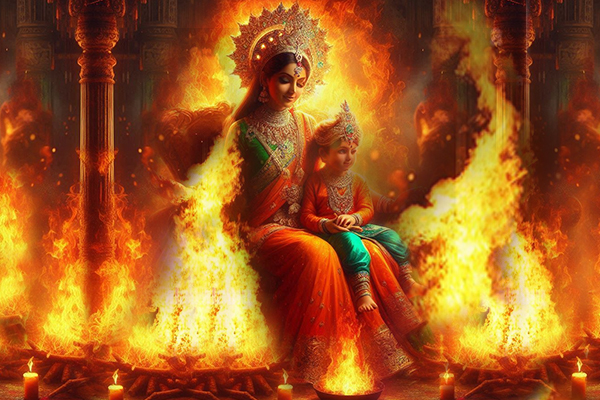
The seventh Canto of Bhagavata Purana or Shrimad Bhagavatam describes an ancient legend that explains Holi. The demonic king Hiranyakashipu ruled the earth and envied Bhagwan Vishnu (in His Varaha Avatar) for killing his brother Hiranyaksha. The gods under Bhagwan Indra attacked the king's kingdom after he performed the harshest Tapasya (penance) in the forest to please
Bhagwan Brahma
. Sage Narada took the king's pregnant wife to his kutir (Ashram) and taught her Bhakti Yoga, arguing that she is sinless and should not be attacked. Prahlada, her unborn child, became a Vishnu devotee due to those transcendental instructions.
Soon, king Hiranyakashipu discovered that his son was devoted to his enemy, Bhagwan Vishnu, and tried to convince Prahlad to give up his useless devotion. After failing, the king tried poisoning, trampling, and locking his son in a chamber with snakes and pythons. Holika, King Hiranyakashipu's sister, killed herself trying to kill his son Prahlad. This night is Holika Dahan.
After his son survived these horrific treatments, the king finally asked his sister Holika to burn Prahalad. She sat on a pyre in her mysterious cloak and tricked the boy into sitting in her lap. She knew her cloak would defend her from fire. On this occasion, Agni, the Fire God and Vishnu devotee, blew away her cloak. Vishnu tattvas (cosmic elements of cold and goodness) also protected Prahlad, who prayed to Bhagwan Vishnu. Holika was killed by the Bhagwan, who later became Narasimha (half lion, half superhuman) and killed Hiranyakashipu. A famous Holika Dahan story explains why we celebrate Holi.
On Holi, people pray to Bhagwan Vishnu, who became Narasimha to end cruelty and injustice. Hindus worship the Bhagwan by chanting the
Vishnu Sahasranama
, one of the holiest stotras.
Legend of Bhagwan Krishna and Radha
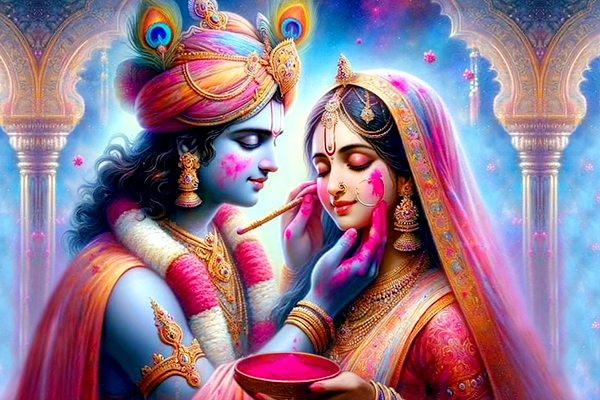
Radha Krishna's Holi StoryThe Holi festival is also associated with Bhagwan Krishna's pastimes with his divine friend and devotee
Srimati Radharani
. The Braj region of India, where Krishna and Radha grew up, is believed to host the events. They celebrate the festival until Rangpanchmi. Their celebration revolves around the divine relationship between Radha and Bhagwan Krishna.
The merriments formally welcome spring, and people celebrate the Holi festival as a symbol of divine, pure love for the Bhagwan and his topmost devotees, such as Radha and her friends. Krishna and His close friend Srimati Radharani initiated the Dhuleti or Dhulandi celebrations in the Braj region of Mathura, India, about 5000 years ago.
According to legend, Bhagwan Krishna once drank Putana's poisoned breast milk while playing as a child. This milk turned his skin a deep blue. When the Bhagwan grew to enjoy His youth pastimes, He became concerned about His dark blue appearance. He spent days wondering if Radha, the cowherd girls, and boys would like Him in His dark blue color. His mother, Yashoda, was concerned about his stress and asked him to color her face with the color of his choice. When the Bhagwan colored Radha's face, she reciprocated, as did the other cowherds, and these activities resulted in the emergence of the colorful festival known today as Holi. This is one of the stories that explain why people celebrate Holi.
Today, Mathura, Braj, the birthplace of Bhagwan Krishna, celebrates the festival on a grand scale. People in Vrindavan celebrate Holi by performing a special puja, which is a traditional method of worshiping the Bhagwan. This is where the sixteen-day festival takes place. People celebrate the Holi festival in Hathras, Aligarh, and Agra, just as they do in Mathura, Vrindavan, and Barsana.
Story of Bhagwan Kamadeva and Rati
Holi is also linked to the legend of Bhagwan Kamadeva, the god of love, and his wife Rati. According to mythology, when
Bhagwan Shiva
withdrew into deep meditation after the death of his wife Sati, the gods feared his absence could disrupt the balance of the universe. To awaken him, Kamadeva shot his flowered arrow of love at Shiva. However, Shiva, angered by this disturbance, opened his third eye and burned Kamadeva to ashes. Rati, heartbroken, performed severe penance to bring her husband back to life. Moved by her devotion, Shiva restored Kamadeva, but only in a formless, spiritual state. This legend adds a layer of romance and sacrifice to Holi, with the festival also being seen as a tribute to love and the reunion of Kamadeva and Rati.
Story of Dhundhi and the Celebration of Childlike Fun

In some regions, Holi is associated with the legend of Dhundhi, a female demon who terrorized the kingdom of Prithu. According to folklore, Dhundhi was immune to the power of gods, weapons, and even mantras due to various boons. However, she had one vulnerability—mischief caused by children. The children of the kingdom joined forces and drove her away by teasing her, throwing colors, and making loud noises. This story explains the playful and carefree spirit of Holi, where mischief and fun are integral to the celebrations, especially for children.
The Legend of Pootana
Another story from the life of Bhagwan Krishna adds depth to Holi. Pootana, a demoness sent by Kansa to kill Krishna as an infant, disguised herself as a kind woman and tried to poison him by breastfeeding him with poisoned milk. However, Krishna, recognizing her evil intentions, sucked out her life force instead, ending her wickedness. The people of Gokul celebrated Krishna’s victory by smearing colors and singing songs of joy. This legend further reinforces the theme of the triumph of good over evil.
Each story and legend associated with Holi weaves together the threads of devotion, joy, and renewal. From the fiery protection of Prahlada and the divine love of Krishna and Radha to the playful mischief of children and the enduring devotion of Rati, Holi transcends mythology to become a festival that celebrates life itself. It reminds us of the eternal triumph of good, the power of love and unity, and the beauty of starting anew with every spring.
Holi 2025 Date, Time, Muhurat & Tithi
Holi festival will be celebrated on Friday, March 14th, 2025,
Holika Dahan
is celebrated the night before the actual celebration of Holi, taking place on the evening of Thursday, March 13th. Choosing the right time (auspicious Muhurat) for Holika Dahan is important as this is the time to burn all bad karmas by praying deeply at the bonfire.
Key Timings for Holi Festival 2025:
-
Holika Dahan (Bonfire Ritual) Muhurat:
6:45 PM to 8:12 PM (IST) on Thursday, March 13, 2025
Duration: 1 Hour 27 Minutes - Dhulandi (Playing with Colors): Celebrated throughout the day on Friday, March 14, 2025 (IST)
- Purnima Tithi Begins: 06:01 AM on March 13, 2025 (IST)
- Purnima Tithi Ends: 04:23 AM on March 14, 2025 (IST)
Muhurat of Dahan is determined based on Purnima and Bhadra. Holika Dhahan is never to be done during Bhadra but during Pradosha while Purnima Tithi prevails. Ideally, this should be done after Bhadra is over. Performing Dahan during Bhadra leads to bad luck and suffering.
Note: Sunrise and sunset vary by region and date due to India's geographical diversity. For exact timings, refer to local astronomical data.
How to celebrate Holi 2025 Festival
Holi, the festival of colors, is not just a celebration but an immersive experience that brings people together in a whirlwind of joy, laughter, and vibrant traditions. Rooted in centuries of culture and mythology, Holi is celebrated with a blend of rituals, community bonding, and unrestrained fun. Here’s a step-by-step journey into how Holi is celebrated, from its spiritual beginnings to its colorful climax.
The Evening of Holika Dahan: Setting the Stage for Renewal
The Holi celebrations begin on the eve of the festival with
Holika Dahan
, also known as
Chhoti Holi
. This ritual is steeped in the mythological story of Prahlada, a devotee of Bhagwan Vishnu, and his triumph over evil. According to legend, Holika, the sister of the demon king Hiranyakashipu, conspired to kill Prahlada by luring him into a blazing fire. However, Holika perished due to her evil intentions, while Prahlada emerged unscathed through his faith in Vishnu.
To honor this victory of good over evil, large bonfires are lit in villages, towns, and cities. People gather around the bonfire, performing rituals, chanting prayers, and offering grains, coconuts, and flowers to the flames. The sight of the burning effigy of Holika symbolizes the destruction of negativity and serves as a spiritual cleansing for the year ahead. Families and communities come together, sharing stories, laughter, and hope for renewal and prosperity.
Tip:
Participate in a local Holika Dahan ceremony to witness the deeply symbolic start of Holi and join in prayers for positivity and blessings.
Dhulandi: The Joyful Explosion of Colors

The second day, known as
Dhulandi, Rangwali Holi
, or simply
Holi
, is where the magic happens. Streets, parks, and homes transform into vibrant playgrounds as people of all ages engage in the tradition of throwing colors. Armed with gulal (colored powders), pichkaris (water guns), and buckets of colored water, revelers smear each other with hues of red, yellow, green, and blue, symbolizing the diversity and unity of life.
The playful nature of Dhulandi reflects the legendary stories of
Bhagwan Krishna
and
Radha
, where Krishna playfully colored Radha and her friends in Vrindavan. This spirit of lighthearted mischief continues as people chase each other with colors, dance to energetic music, and share festive cheer. The vibrant atmosphere is enhanced by drum beats and folk songs that add to the festive revelry.
Tip:
Wear light-colored clothes you don’t mind getting stained, and use eco-friendly, herbal colors to celebrate Holi responsibly. Keep a towel and water bottle handy!
Reconnecting with Loved Ones

Holi is more than just a riot of colors—it is a celebration of togetherness and reconciliation. Families and friends use this day to mend broken relationships, forgive past grievances, and strengthen emotional bonds. Visits to loved ones are a hallmark of the day, with people exchanging warm hugs, cheerful greetings, and festive delicacies.
Traditional sweets like
gujiya, malpua, rasgulla,
and drinks like
thandai
are shared, adding a delicious dimension to the celebrations. For many, Holi is a time to extend kindness to neighbors and strangers alike, welcoming them into the fold of the festivities.
Tip:
Take time to visit friends and family, bringing along some sweets or colors to spread happiness and foster harmony.
The Spirit of Gratitude: Holi as Thanksgiving for Farmers

For India’s farming communities, Holi marks the end of the winter harvest and the beginning of the new agricultural season. It serves as a time of gratitude to the divine for a bountiful harvest and prayers for future prosperity. Farmers join the celebrations with a sense of joy and fulfillment, making Holi akin to Thanksgiving in the farming calendar.
Rituals such as offering grains to the Holika bonfire and praying for good rains and crops reflect this deep connection between Holi and nature. This aspect of the festival ties it to the cycles of life and the symbiotic relationship between humans and the environment.
Global Celebrations: Holi Beyond Borders

In recent decades, Holi has transcended its Indian origins to become a global phenomenon. From Europe and North America to Australia and South Asia, communities worldwide celebrate Holi with enthusiasm, embracing its message of unity and joy. Organized events featuring music, dance, and color play allow people of all backgrounds to join in the festivities, making Holi a celebration of diversity and inclusion.
Tip:
If you're outside India, look for local Holi events or festivals to join in the colorful fun and experience the cultural richness of this festival.
The Emotional and Spiritual Essence

Holi is more than a physical celebration; it is a festival of emotional renewal and spiritual awakening. The bonfire of Holika Dahan encourages individuals to let go of negativity, grudges, and fears, while the playfulness of Dhulandi inspires joy and childlike wonder. The festival teaches us to embrace life in all its colors, to value relationships, and to find happiness in simplicity.
Tip:
Spend a quiet moment reflecting on the deeper meaning of Holi—its call to let go of the past and embrace new beginnings.
Holi is a festival that touches every aspect of life—spiritual, emotional, social, and even environmental. From the fiery rituals of Holika Dahan to the colorful exuberance of Dhulandi, Holi invites everyone to immerse themselves in its vibrant spirit. It is a time to celebrate love, unity, and renewal, reminding us that life, much like Holi, is best enjoyed with laughter, togetherness, and an open heart. Whether you’re playing with colors, reconnecting with loved ones, or simply soaking in the festive atmosphere, Holi is an experience that leaves an indelible mark on your heart and soul.
What Is The Meaning Of Holika Dahan & Why Is It Celebrated?

The performance of Holika Dahan represents the defeat and burning of evil or inauspicious elements. The night before Dhuleti is the time to light the bonfire as a warning to all negative elements in the cosmic atmosphere. People perform Holika Dahan in the following ways:
The process involves gathering wood and other combustible materials into a heap to ignite the bonfire. People can light bonfires in public places, open areas, and even near temples. Installing Holika effigies with Prahlada in her lap on top of the heap. (Holika's effigy is made of combustible materials, while Prahlada's is not).
On the night of Phalgun Purnima, people set the materials on fire and offer various prayers to Agni (Fire). People chant rakshoghna mantras from the Rig Veda while walking around the bonfire and offering coconuts. They then use the half-burnt coconuts as prasadam (holy offering).
Dhuleti: Why Do We Throw Colors On Each Other?

The following day, people participate in Dhuleti, a colorful water-based Holi game, using pichkaris (water guns) and water balloons. In the spirit of the holiday season, people sprinkle colored water on one another. 'Dhuleti' means throwing mud, 'Dhul' means sand, 'mud, and 'eti' means the practice of doing something. As a result, it entails throwing colorful sand on top of one another.
The Holi festival begins at night, with people participating in the Holika Dahan (burning of Holika) to perform rituals before the bonfire. Families gather there to ask the Divine to burn down their six sins: anger, greed, lust, desire, pride, and envy, just as Holika, King Hiranyakashipu's sister, was burned down.
Following the night of Holika, the next day begins with a celebration of the actual Holi, also known as Rangwali Holi. The most exciting part is when kids, adults, and seniors splash water and colors on each other. Children use water guns and throw water-filled balloons at one another or strangers.
The festive celebration is free of language barriers, caste, religion, and other social or communal backgrounds. Regardless of wealth or poverty, individuals of all ages, including children and elders, are welcome to participate and engage in the festivities to their delight. Public celebrations take place in streets, parks, temples, and housing societies, serving music, dance, and delicious food.
It is the best time to visit your loved ones, forget about the bad memories of the past, and reunite in a peaceful spirit. It is time to try traditional drinks like bhang (marijuana), which has a mild mood-altering effect. Following the day-long celebration, people visit their loved ones in the evening and eat dinner together.
Holi Festival Puja Vidhi (Puja Procedure)
Here's a detailed and spiritually enriching guide to performing Holi Puja:
1. Preparation for Holika Dahan
The preparations for Holika Dahan begin well before the evening, as families and communities gather to create the ceremonial bonfire:
- Setting up the Pyre: Select an open space, often in a central location like a temple courtyard or village square. Build the pyre with wooden logs, dried leaves, twigs, and cow dung cakes.
- Effigies: Place an effigy of Holika , symbolizing evil and ego, on the pyre. In some traditions, a smaller effigy representing Prahlada is added to honor his unwavering faith and devotion to Bhagwan Vishnu.
- Decorations: Adorn the pyre with garlands of flowers and sprinkle it with sacred items like turmeric powder, vermilion, and raw rice to sanctify the ritual.
2. Purification and Sankalpa (Setting Intentions)
Before starting the puja, devotees prepare themselves by:
- Taking a holy bath to cleanse the body and mind, signifying the removal of negative energy.
- Dressing in clean, traditional attire, maintaining ritualistic purity.
- Sitting before the pyre and taking a sankalpa (sacred vow), which includes expressing gratitude, seeking blessings for prosperity, and setting intentions to overcome negativity and obstacles in life.
3. Lighting the Holika Bonfire
The
Holika Dahan
begins at the prescribed
muhurat (auspicious time):
- The eldest family member or priest lights the bonfire, which symbolizes the destruction of evil and negativity. The flames are seen as a purifying force that paves the way for renewal and spiritual awakening.
- As the fire burns, devotees offer prayers to Bhagwan Vishnu, seeking his blessings for protection, prosperity, and happiness.
4. Offerings to the Bonfire
Devotees make offerings to the fire, symbolizing their surrender to divine will and the burning away of impurities in life. Common offerings include:
- Coconuts: Representing purity and prosperity.
- Raw Turmeric and Grains: Signifying gratitude for abundance and harvest.
- Cow Dung Cakes and Twigs: Symbolizing humility and simplicity.
- Flowers and Camphor: As a gesture of devotion.
As you make the offerings, chant mantras dedicated to Bhagwan Vishnu or recite prayers for the well-being of your loved ones and the community.
5. Circumambulation (Parikrama)
Walk around the bonfire, typically three or seven times, while sprinkling water, flowers, or sacred grains into the fire. This act of circumambulation, known as
parikrama
, symbolizes devotion and the removal of sins and negative energies. Families often hold hands and circle the fire together, strengthening their bonds and collective faith.
6. Chanting Mantras and Prayers
Recite sacred mantras to invoke divine blessings. A commonly chanted mantra during Holika Dahan is:
'Om Holikayai Namah'
This mantra pays homage to the legend of Prahlada and Holika, celebrating the victory of faith and righteousness.
7. Collection of Sacred Ashes
Once the fire subsides, collect the ashes and remnants of the bonfire. These are considered auspicious and are believed to carry protective and purifying energy. Many families sprinkle these ashes in their homes or on their foreheads to ward off evil spirits and attract blessings.
8. The Morning of Dhulandi (Playing with Colors)
The day after Holika Dahan is
Dhulandi
, also known as the festival of colors. The morning begins with:
- A simple prayer at home, offering flowers, incense, and sweets to Bhagwan Krishna and Radha.
- Smearing a pinch of herbal color on idols or pictures of the deities as an act of devotion.
- Preparing for the day’s celebrations by applying oil to the skin and hair for protection from colors.
The Spirit of Holi Puja
Holi Puja is a powerful reminder of life’s cyclical renewal, the victory of faith, and the importance of gratitude. The flames of Holika Dahan not only cleanse the environment but also burn away the metaphorical impurities within, helping devotees embrace positivity and new beginnings. Dhulandi, on the other hand, celebrates unity, joy, and the vibrant diversity of life, making Holi a perfect blend of spirituality, culture, and unbridled happiness.
By performing Holi Puja with devotion and sincerity, one not only honors ancient traditions but also experiences a profound connection with the divine essence of the festival.
Holi Festival Puja Mantras
Chanting mantras during the Holi Puja is an integral part of the rituals, as it invokes divine blessings and enhances the spiritual significance of the festival. Below are some of the most commonly chanted Holi Puja mantras, each carrying a deep meaning and purpose:
Mantra for Worshiping Bhagwan Vishnu
Since Holi is closely associated with the story of Prahlada and his devotion to Bhagwan Vishnu, this mantra is chanted to seek the Bhagwan’s blessings for protection, guidance, and prosperity:
'Om Namo Bhagavate Vasudevaya'
Meaning:
'I bow to Bhagwan Vasudeva (an incarnation of Vishnu), who sustains the universe and embodies divine virtues.'
Mantra for Holika Dahan (To Burn Negativity)
This mantra is chanted during the lighting of the Holika bonfire to symbolize the destruction of evil and the purification of the soul:
'Om Holikayai Namah'
Meaning:
'I bow to Holika, whose sacrifice reminds us of the power of faith and virtue over evil.'
Mantra for Circumambulation (Parikrama)
While walking around the Holika fire, devotees chant this mantra to honor Bhagwan Vishnu’s protection of Prahlada and seek blessings for the removal of sins and negativity:
'Jayanti Mangala Kali Bhadrakali Kapalini
Durga Kshama Shiva Dhatri Swaha Swadha Namostute'
Meaning: 'Salutations to the divine feminine energies, the bringers of victory, compassion, and protection.'
Mantra for Devotional Offering
When offering coconuts, grains, and other sacred items into the fire, this mantra is recited to surrender one’s ego and seek the goddess’s blessings:
'Om Agnaye Swaha'
Meaning:
'I offer this to Agni (the fire god), who purifies all things.'
Mantra for the Festival of Colors (Dhulandi Day)
On the day of Dhulandi, while starting the color celebrations, devotees can chant this mantra to invoke the joy and vibrancy of Bhagwan Krishna and Radha:
'Radhe Krishna Radhe Krishna Krishna Krishna Radhe Radhe
Radhe Shyam Radhe Shyam Shyam Shyam Radhe Radhe'
Meaning:
'Glory to Radha and Krishna, the divine couple, symbols of eternal love and joy.'
These mantras not only enhance the spiritual essence of the Holi Puja but also create a positive and uplifting atmosphere. Chant them with devotion and sincerity to deepen your connection with the festival’s profound meaning.
Holi Vrat Vidhi (Fasting Procedure)
The Holi Vrat is a sacred observance undertaken on the day of Holika Dahan to honor the divine traditions of the festival and seek spiritual purification and blessings. Devotees begin the day with a holy bath, symbolizing the cleansing of both body and soul, and dress in clean, traditional attire to maintain ritualistic purity. The vrat starts with a sankalpa , or vow, made in front of the puja altar or the Holika bonfire, where devotees pledge to observe the fast with sincerity and devotion, praying for peace, prosperity, and the removal of negativity from their lives. Fasting during Holi Vrat can be observed in various forms—some may choose a nirjala vrat (complete fast without water), while others may follow a phalahar vrat, consuming only fruits, milk, and water. Throughout the day, devotees dedicate their time to prayer, chanting mantras, and meditating on divine energies, especially Bhagwan Vishnu and Goddess Holika, to reinforce their spiritual connection. The fast is broken after the Holika Dahan ceremony, during which offerings such as coconuts, grains, and camphor are made to the bonfire, symbolizing the destruction of negativity and the triumph of good over evil. The vrat concludes with the consumption of prasadam, marking the culmination of a day spent in devotion, self-discipline, and gratitude, aligning the individual with the festival’s deeper spiritual essence.
Holi Vrat Katha (Traditional Fasting Story)
The Holi Vrat Katha revolves around the legendary tale of Prahlada and Holika, a story that symbolizes the triumph of devotion, righteousness, and good over evil. This story is not only central to the festival of Holi but also highlights the power of unwavering faith and the protective grace of the divine.
Prahlada was the son of Hiranyakashipu, a powerful demon king who considered himself invincible and demanded that everyone worship him as a god. However, Prahlada, being a devout follower of Bhagwan Vishnu, refused to worship his father and instead chanted Bhagwan Vishnu’s name with unwavering devotion. This enraged Hiranyakashipu, who tried to dissuade Prahlada in various ways but failed to weaken his faith.
Angered by Prahlada's defiance, Hiranyakashipu plotted to kill his own son. He devised several cruel attempts, such as throwing him off a cliff, placing him in a pit of snakes, and poisoning his food, but each time, Prahlada was miraculously saved by Bhagwan Vishnu. Finally, Hiranyakashipu sought the help of his sister Holika, who possessed a magical boon that made her immune to fire. Holika deceitfully persuaded Prahlada to sit on her lap and entered a blazing fire, intending to burn him alive. However, Holika’s evil intentions led to her downfall—her boon failed, and she was consumed by the fire, while Prahlada emerged unscathed, protected by his devotion and the blessings of Bhagwan Vishnu.
This event marks the origin of Holika Dahan, the ritual bonfire lit on the eve of Holi, symbolizing the destruction of evil forces and the victory of faith, virtue, and righteousness. The ashes from the fire are considered sacred and are believed to carry protective and purifying energies.
The Holi Vrat Katha teaches us the importance of steadfast devotion, the power of goodness, and the ultimate triumph of divine grace over wickedness. By observing the Holi vrat, devotees commemorate Prahlada’s unwavering faith and invoke the blessings of Bhagwan Vishnu to overcome challenges, purify their hearts, and invite positivity and prosperity into their lives. The story reminds us to remain steadfast in our beliefs and embrace the joy of renewal and transformation that Holi represents.
Puja Utensils, Essentials
Rudra Centre
brings an extensive collection of Puja Articles which caters to all that is required for daily and special Puja Vidhis. We offer variants of designs and sizes in each category. The list includes handcrafted Puja Mandirs, Puja Pedestals, offering Bowls, Panchpatra, intricately carved Puja Thalis, Abhishek Vessels, in different materials, Pure Silver/German Silver articles like Kalash, set of Shodash Upachara and Several other Puja Articles, which we deliver at your doorstep.
Visit the complete collection:
Holi Dahan - Holi Burning – Kit
A complete kit that contains items required for the Holi bonfire: Mango sticks, Cow dung cakes, kapur, ghee, jau grains, sea salt and more.
Holi Pichkari With Bucket in Pure Silver
A pure silver Baalti (container) and Pichkari (water gun) with intricate carving work serve a highly aesthetic gift for Holi festival.
Holi Gulal
Environment-friendly Herbal Gulal is available in three different colours: Red, Green and Blue. Enjoy spreading the colours of love on Holi.
Holi Set
Contains Holi Pichkari, Six Gulal, namely Red, Green, Blue, Pink, Maroon and Yellow and one pack of 100 Water Balloons included.
Holi Pichkari - Water Spray Gun
Colour up your Holi celebrations! Made in non-toxic plastic, Pichkari can hold a decent amount of water and is ideal for children and adults.
Holi Gulal - Set of Six Colours
Safe and eco-friendly Herbal Gulal is available in six different colours, red, green, blue, pink, maroon and yellow. Spice up your Holi mood.
Holi Pujan and Katha
Holi special puja brings positivity and purity into one's home. Best for bringing peace into your life and success into your profession.
Puja and Yajna at Sri Maha Pratyangira Devi Temple
For relief from debts, diseases, misfortune and bad karma. Protection against black magic and removal of obstacles and prosperity
Conclusion
Holi, the festival of colors, stands as a radiant celebration of life, love, and renewal, deeply embedded in the cultural and spiritual fabric of India. Rooted in mythology, it symbolizes the triumph of good over evil, as epitomized by the burning of Holika during Holika Dahan, which signifies the destruction of negativity and the dawn of hope. The vibrant hues of Dhulandi, when participants play with colors, remind us of the kaleidoscope of emotions and diversity that life offers. This joyous festival transcends boundaries of age, caste, and community, fostering a sense of unity and mutual respect. By coming together to celebrate, people strengthen relationships, mend broken ties through forgiveness, and dissolve past grievances, embracing each other with open hearts. Holi, therefore, becomes a spiritual and emotional rejuvenation, inspiring us to embrace positivity, gratitude, and harmony.
Beyond its cultural significance, Holi also offers a plethora of physical, emotional, and social benefits. The festive gaiety and communal spirit create a powerful sense of belonging and joy, reducing stress and uplifting mental well-being. The playful activities of smearing colors and dancing to music act as a form of exercise, promoting physical health and releasing endorphins that enhance happiness. The natural colors, traditionally derived from herbs and flowers, often carry therapeutic properties, nurturing the skin while celebrating the occasion. Socially, Holi dissolves societal barriers, encouraging inclusivity and fostering a sense of equality, where everyone participates as one, regardless of status or background. The festival’s emphasis on sharing sweets and delicacies further strengthens bonds of love and community. Ultimately, Holi is not merely a celebration of colors but a holistic experience that nourishes the body, mind, and soul, leaving a lasting imprint of joy, unity, and gratitude.

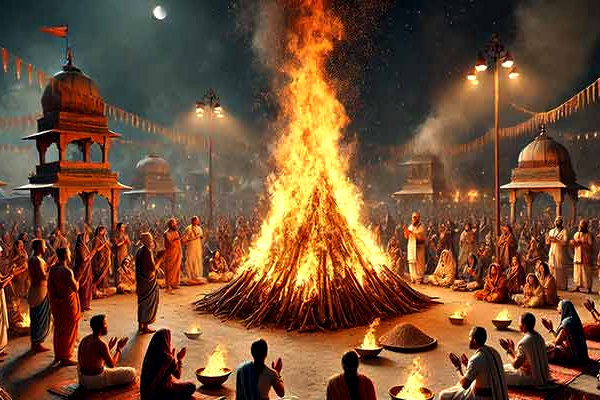
.jpg)
.jpg)
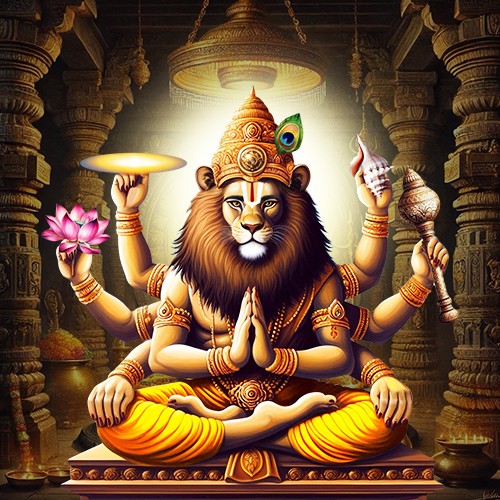
-in-Astrology.jpg)


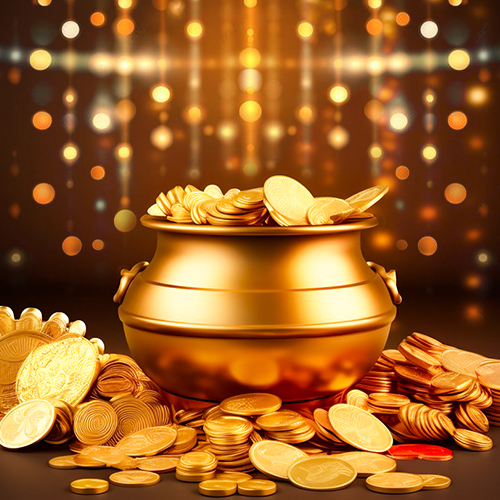

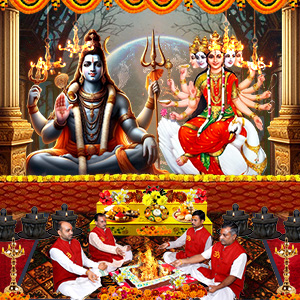
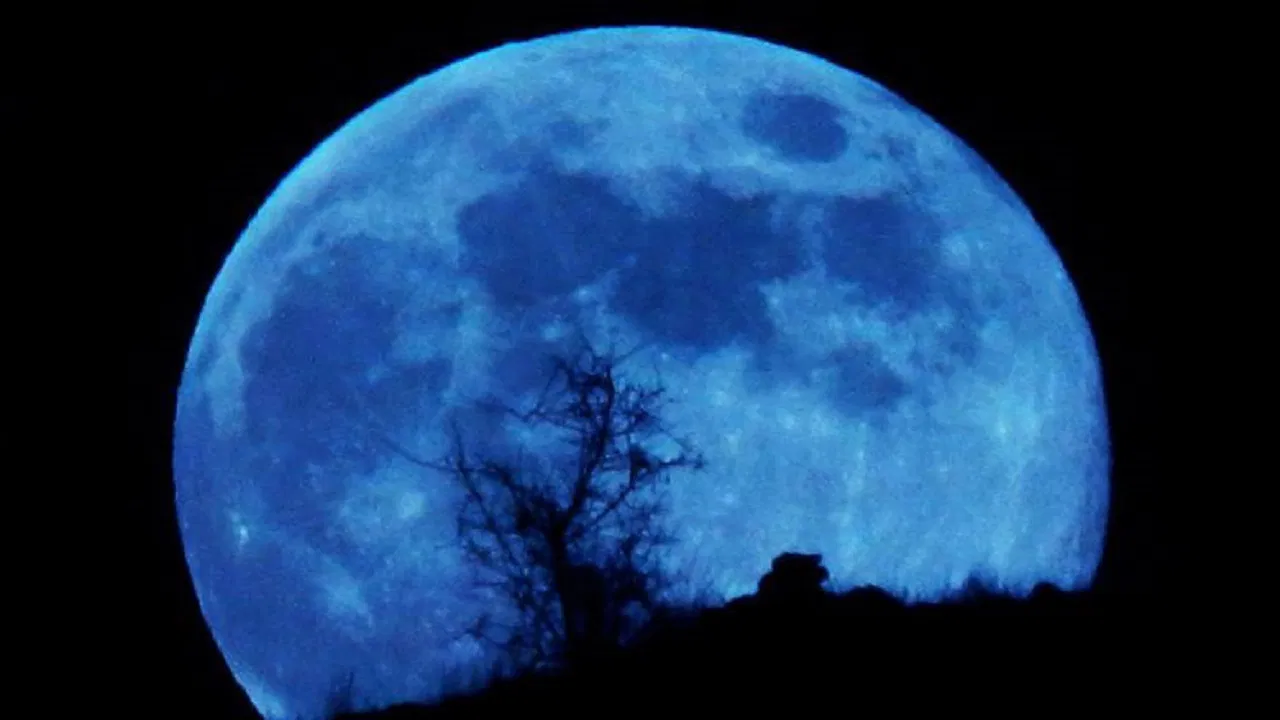
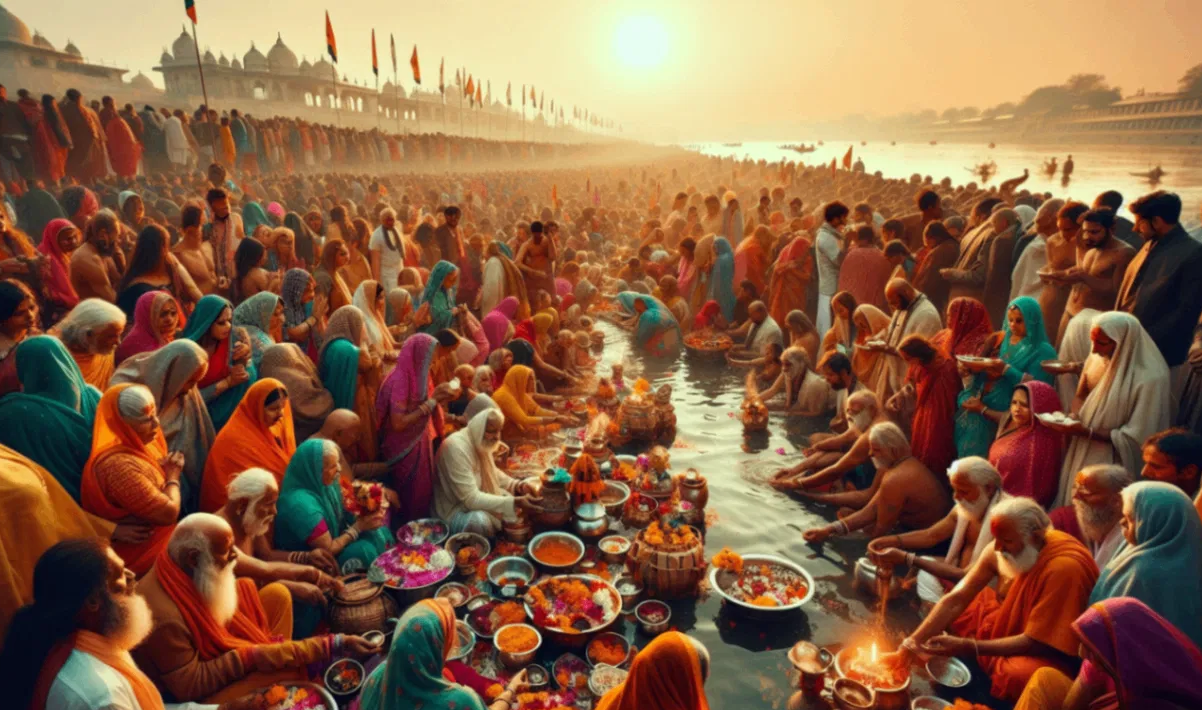
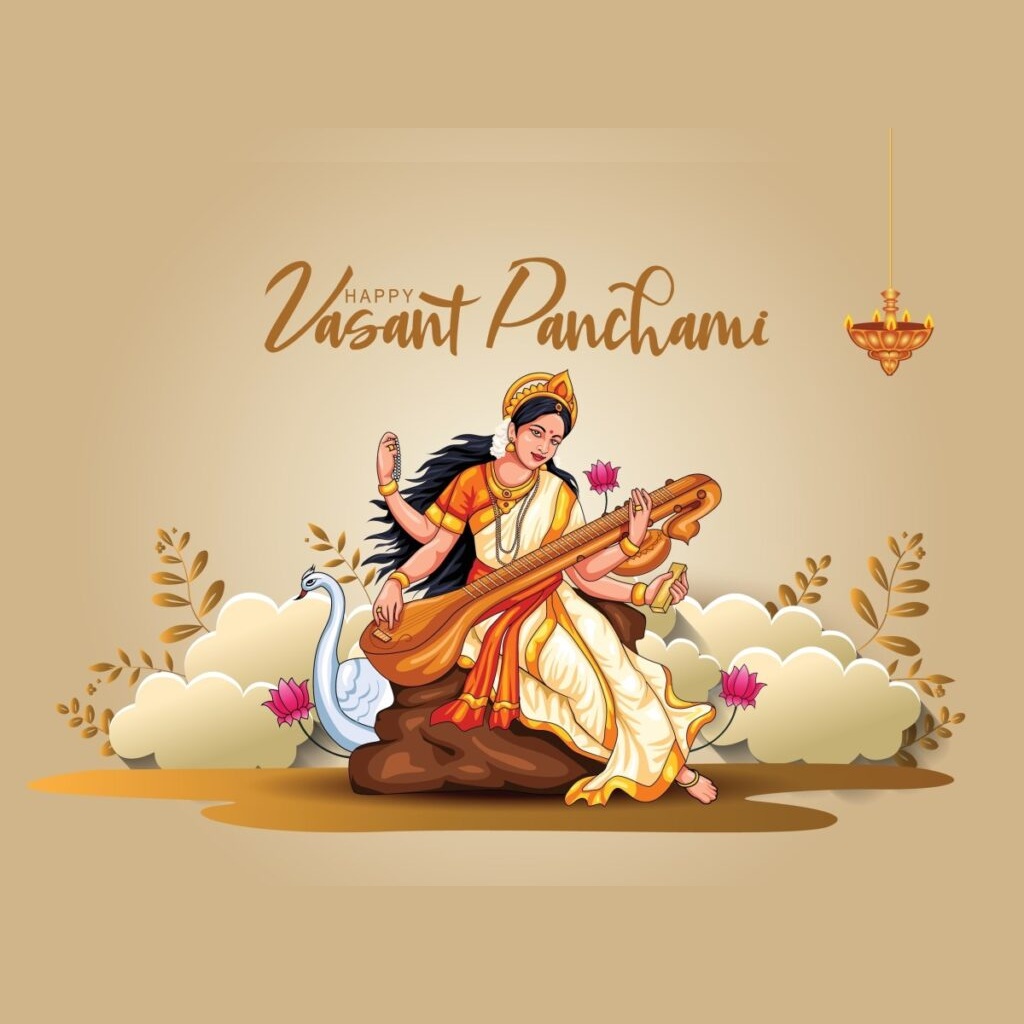
Comments 0
Leave your thought here